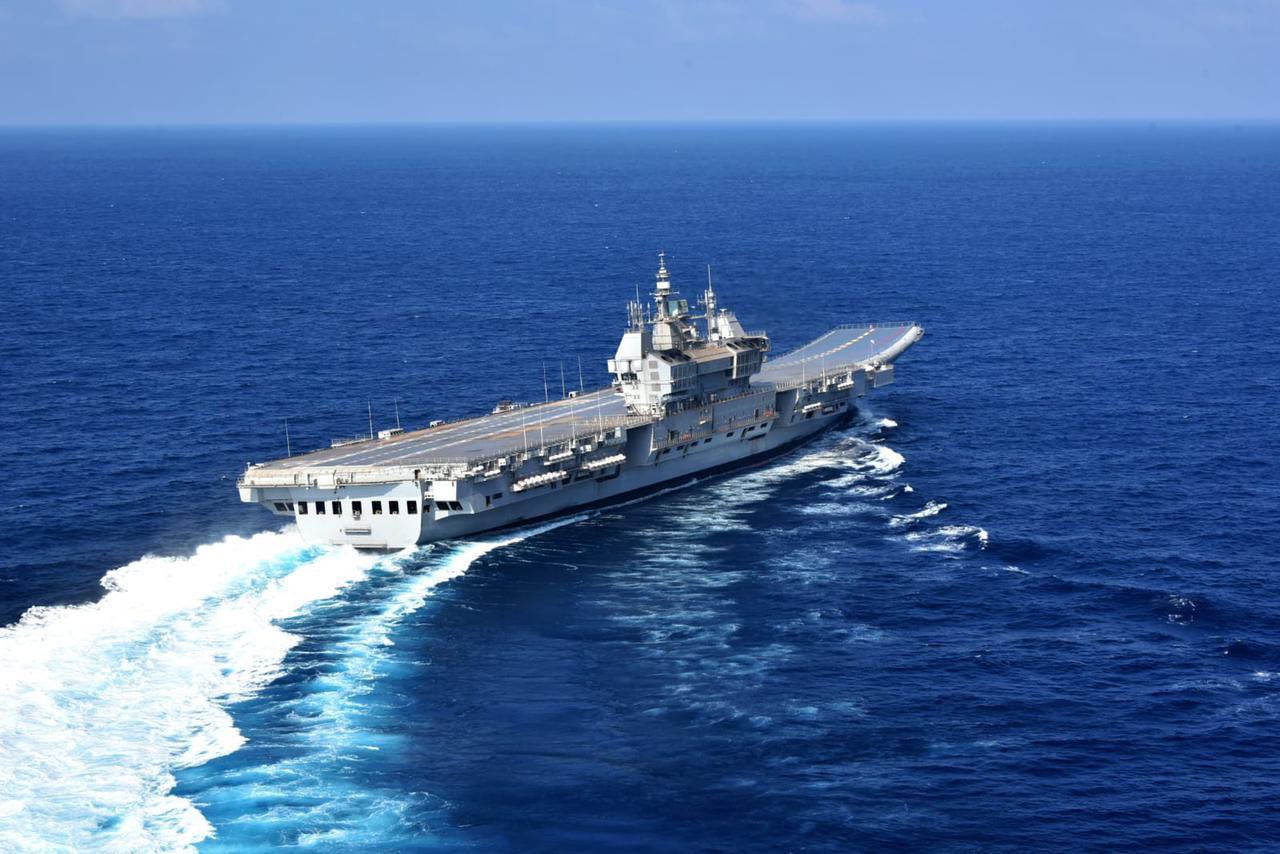The first Indian-made aircraft carrier, INS Vikrant, was commissioned by Prime Minister Narendra Modi on Friday at the Cochin Shipyard. INS Vikrant will now serve as the Navy’s second aircraft carrier alongside INS Vikramaditya. The event was attended by Defense Minister Rajnath Singh, Kerala Chief Minister Pinarayi Vijayan, Kerala Governor Arif Mohammad Khan and several armed forces officials.
PM Narendra Modi commissions indigenous Aircraft Carrier IAC Vikrant, the largest & most complex warship ever built in India’s maritime history, into the Indian Navy at a ceremony in Kochi, Kerala. #INSVikrant pic.twitter.com/CEQAX5ybYE
— ANI (@ANI) September 2, 2022
PM Modi said that INS Vikrant is a testament to India’s hard work and dedication. “This event being held on INS Vikrant is a shout-out to India’s rising spirits on the world horizon,” said PM Modi. “Vikrant is massive, it’s a giant. Vikrant is distinct, Vikrant is special. It is not just a warship but a testament to the hard work, talent, influence and commitment of 21st century India,” he added.
INS Vikrant is an example of Government’s thrust to making India’s defence sector self-reliant. https://t.co/97GkAzZ3sk
— Narendra Modi (@narendramodi) September 2, 2022
“If the goals are quick, the journeys are long, the ocean and the challenges are endless – then India’s answer is Vikrant. The incomparable elixir of the elixir of freedom is Vikrant. Vikrant is a unique reflection of India becoming self-reliant,” PM Modi further said.
PM Modi further added, “Earlier, security concerns in the Indo-Pacific region and the Indian Ocean have long been ignored. But, today this area is a major defence priority of the country. That’s why we are working in every direction, from increasing the budget for the Navy to increasing its capability.”
#Historical…
— IN (@IndiannavyMedia) September 2, 2022
Hon’ble PM @narendramodi unveils the new #naval ensign making 02 Sep 2022 as a momentous day in the history of #IndianNavy#HarKaamDeshKeNaam@DefenceMinIndia@Indiannavy pic.twitter.com/eu3BpmWQfX
The Prime Minister also unfurled the new flag of the India Navy onboard INS Vikrant. The Navy introduced a brand new ensign replacing the St George’s Cross, shedding the remains of coloniality.

INS Vikrant: India’s first Indigenous aircraft carrier
With the launching of the ‘Vikrant,’ India has joined a limited club of nations that have the unique capacity of designing and building an aircraft carrier in-house, including the United States, the United Kingdom, Russia, China, and France. The carrier is given its name in honour of her historic predecessor, India’s first aircraft carrier, which was instrumental in the fight against Pakistan in 1971. It is designed by the Warship Design Bureau (WDB), an internal organisation of the Indian Navy, and is constructed by Cochin Shipyard Limited, a public sector company.

The battleship is built with indigenous equipment and machinery supplied by major industrial firms in India as well as over 100 MSMEs. Steel Authority of India Limited (SAIL) indigenised the warship-grade steel necessary for the building of the IAC in conjunction with the Defence Research and Development Laboratory (DRDL) and the Indian Navy.

When fully laden, the 262 m long and 62 m broad Vikrant displaces roughly 43000 tonnes and has a maximum permitted speed of 28 knots with a range of 7500 nautical miles. It includes over 2,200 compartments built for a crew of approximately 1,600 people, including specialised quarters for female officers and sailors.
#LegendisBack #IACVikrant – equipped with State-of-the-Art facilities is a ‘City on the Move’ @indiannavy @IN_WNC @INEasternNaval1 @IN_HQSNC pic.twitter.com/3IWKJPGiEJ
— IN (@IndiannavyMedia) August 30, 2022
It would be able to operate an air wing of 30 aircraft, including MiG-29K fighter planes, Kamov-31 and MH-60R multi-role helicopters, as well as indigenously developed Advanced Light Helicopters (ALH) and Light Combat Aircraft (LCA).
INS Vikrant is powered by four General Electric LM2500+ gas turbines installed on two shafts, and they generate 80 megawatts of power.
The carrier features a STOBAR configuration along with a ski-jump. STOBAR or Short Take-off But Arrested Recovery mean the aircraft take off from the flight deck of the carrier on its own power, but during landing, they are watched by an arresting cable. The ski ramp at the end of the runway helps the planes to take off. More advanced Aircraft Carriers operated by the US and other nations feature a CATOBAR configuration, Catapult Assisted Take-Off Barrier Arrested Recovery, where the fighter jets are pushed using a steam-powered catapult installed on the flight deck, which helps in launching larger aircraft as the length of the deck on a carrier is not enough for them to take off on their own power.
India’s next indigenous carrier INS Vishal will likely feature CATOBAR.
The name Vikrant
The Sanskrit term Vikrant, which means brave, may be found in several texts, including the Bhagwad Gita. The term ‘Vikrant’ is used in the sixth shloka of the first chapter of the Gita to describe the bravery of several Generals from the Pandava army.
In terms of its roots, the ‘Vi’ prefix in the Sanskrit word implies something unique or exceptional, and the ‘Krant’ suffix means to move or progress in a certain direction. In a subsequent verse in the same chapter of the Gita, the term Viraat, which means magnanimous, appears.
The newly commissioned INS Vikrant also displays the Rigvedic slogan “Jayema Sam Yudhi Sprudhah,” which translates to “I conquer those who battle against me,” along with the pennant number R11.

However, the preceding portion of this Rigveda line, which is addressed to the Hindu deity Indra, provides context for this saying. It reads, “Strengthened by the thunderous weapon given by you, we conquer.”



